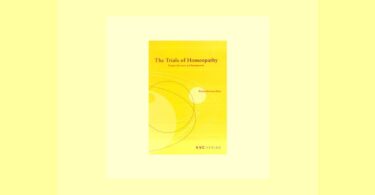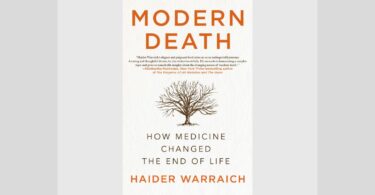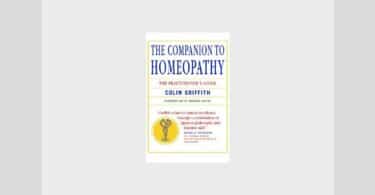ISBN 9789076189604
Language – English
Pages – 307
Hardback
Publisher – Emryss
Prices –
https://www.emryss.com/asteraceae-remedies-of-the-sunflower-family.html 39 Euros
https://www.amazon.co.uk/Asteraceae-remedies-sunflower-JoEvans/dp/9076189609 £35
This initially looks like a small book but when you lift it up and look through it you realise how heavy it is – not just in weight but also in content. There are two main parts to this book.
Part 1 -As soon as the book is opened you can’t fail to be impressed with the full colour, glossy portraits on the left-hand side of each of the double pages of the 35 plants in the Asteraceae family. On the right-hand side of each double page are two columns. In the left-hand column are the homeopathic indications for the remedy. First are the physicals and generals and then near the bottom are the mental and emotion symptoms.
On the right-hand column is additional information about the species: when it flowers, its height, the habitat and what I was so pleased to see, the traditional herbal uses of the plant. Many homeopaths have also had some herbal training and like to give herbal tinctures as organ tonics, so this small section is very useful.
Part 2 is titled – Bitter Pills, Cina and the Anthermideae remedies. There are 8 remedies discussed in this subfamily of the Asteraceae which include the well known, Cina, Chamomilla (Roman and German) and Millefolium.
The themes are given along with the physical affinities, and on the following page a synopsis of each remedy. The theme of aversion to touch is discussed in all the plants and also the hallucinations and dreams.
Next, with reference to the Greek goddess Artemis, the plant’s relationship with women appertaining to childbirth, breastfeeding, menses, nature and nurture are investigated, including why they are called the bitter herbs.
In the footnote on page 101 is a reference to Samuel Pepys’s diary where tansy is mentioned and on page 103 is a case of Absinthium, from Jan Scholten. There is an excellent differentiation between Cina and Chamomilla from Franz Swoboda.
There are 28 pages devoted to Millefolium – Yarrow, which concentrate on the head and haemorrhages, and includes medical astrology, Greek mythology and two cases. I do enjoy reading cases in books.
The next chapter is Bitter Foods with reference to Carduus M. and its relatives which are the lettuces. We are given the synopsis of the thistle and lettuce remedies and then a history of the use of Milk Thistle throughout the ages. There are sections differentiating these remedies for eye symptoms, liver and digestion, tendons, musculoskeletal and movement, skin, mood and lastly urinary and prostrate Symptoms.
The Wild lettuce, Lactuca, with its influence on sleep, I found interesting as I have used it as a constituent of an herbal sleep potion. I make this up for patients, but here I discovered there are many other uses for it. A case of Lactuca V. with chronic urinary and prostate complaints is also included.
The next plant discussed is Dandelion- Taraxacum, and again there is a very illustrative case where a 4-year old doesn’t stop talking for an hour about his symptoms and dreams. The case is solved using the Sensation Method, finding the Vital Sensation and then turning to Materia Medica.
At the end of the chapter there are much briefer descriptions of Actium Lapp, Burdock and Cichoric Acid, isolated from Chicory, after which is a recipe for Sunshine salad using the Asteraceae plants to benefit the liver and gall bladder.
The next section of this book is entitled Earthing the Sun, the Alchemy of Sunflowers. It begins with a fabulous painting circa 1582 on the left-hand side of the first double page symbolising ‘the stage of putrefaction in the process of alchemy’.
Sacc. Off. is compared to the Asteraceae as part of a bitter/sweet theme within themes such as ‘Hides pain’, ‘Candida’ and ‘Worms’ after which the subject of ‘Wounds’ is analysed as well as ‘Malarial fevers.
In the last section of the book, Calendula, the marigold and botanical relatives are discussed in detail with a short story, which is a case using Erigeron Can., in which the homeopath used Jan Scholten’s Plant Theory.
Bellis Perennis is next with another illuminating case of insomnia. Lastly is everyone’s favourite, Arnica and again a great case of migraines is described. We are told that Arnica is the only Asteraceae remedy with the rubric for a headache that both increases and decreases gradually.
The book ends with an ‘Afterword’, then a beautifully illustrated double page containing the Asteraceae themes. References, Bibliography, Image credits, Case contributors, Acknowledgements and a wonderfully illustrated Index complete the book.
This book is a delight. It is a feast for the eyes with the many amazing photos and illustrations throughout the pages. The pages are of a substantial weight and the print clear. It is a very readable book, especially for those who are interested in the herbal side as well as the homeopathic side of remedies.
This is a book written to enable homeopaths to gain a detailed knowledge of the Asteraceae family and I do hope that Jo Evans will have the time to bring out a similar book for another plant family as I was so impressed with this one.





